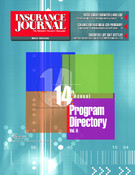The country needs to better consider where and how it builds if it wants to avoid the worst effects of another Hurricane Katrina or Sept. 11 attack, according to experts at the recent National Conference of Insurance Legislators (NCOIL) annual meeting in San Diego.
“We design our own disasters by poor land use planning,” Frank Nutter, president of the Reinsurance Association of America, said.
Alex Soto, president of Insource Inc. and president-elect of the Independent Insurance Agents and Brokers of America, agreed that zoning and building codes should be addressed. “We allow people to rebuild in irresponsible areas. We need to get a collective backbone and look at code inspection systems and put that information out there,” Soto commented.
Stronger enforcement
Past experiences should be used to improve land use laws and building codes, the NCOIL speakers said. Once those rules are updated, they need to be followed. “We learned a lot from Katrina, but we need more prepared discipline and disciplined enforcement,” said Edward Collins, counsel for Allstate Insurance Companies.
David Maurstad, the acting director of the mitigation division for Federal Emergency Management Agency, agreed with the need for a better system of checks and balances for new home and business construction, while acknowledging that enforcement presents challenges.
The country also needs to improve its disaster response systems, the speakers indicated. “Mega-catastrophes are big, and they are not going away,” said Robert Litan, vice president of research and policy for the Kauffman Foundation. Litan said that the current system to respond to such events is “flawed and needs to be fixed.”
Allstate’s Collins urged a different priority. “We’re focused on recovery and rebuilding” he said. “We need to do a better job of preparing and protecting. We’ve had enough wake up calls … we need to strengthen the infrastructure of this country.”
Insurance awareness
Clarissa Preston, director of rating and policy forms for the Louisiana Department of Insurance, said making residents and business owners aware of their options when it comes to insurance is key.
“Many consumers did not know that flood insurance was available to them,” she said. “We’re (LDI) doing a lot of educating in the FEMA disaster recovery centers.”
FEMA’s Maurstad, a former independent insurance agent, acknowledged that training for insurance agents on flood insurance could be better. .
According to Maurstad, 2004 was the greatest loss year in the history of the National Flood Insurance Program until 2005, which will set the new record.
In other news that emerged from the NCOIL meeting, legislators unanimously readopted a model act regarding the use of credit information in personal insurance. The model law, originally adopted by NCOIL in November 2002, already has been enacted via legislation and/or regulation in 26 states.
Topics Catastrophe
Was this article valuable?
Here are more articles you may enjoy.


 Four in New Jersey Face Charges in Alleged $250K Travel Insurance Scam
Four in New Jersey Face Charges in Alleged $250K Travel Insurance Scam  Brown & Brown Files Suit Over Alleged Howden Poaching of 200+ Employees
Brown & Brown Files Suit Over Alleged Howden Poaching of 200+ Employees  Disney Worker Injured Trying to Stop Runaway Boulder at Indiana Jones Show
Disney Worker Injured Trying to Stop Runaway Boulder at Indiana Jones Show 


